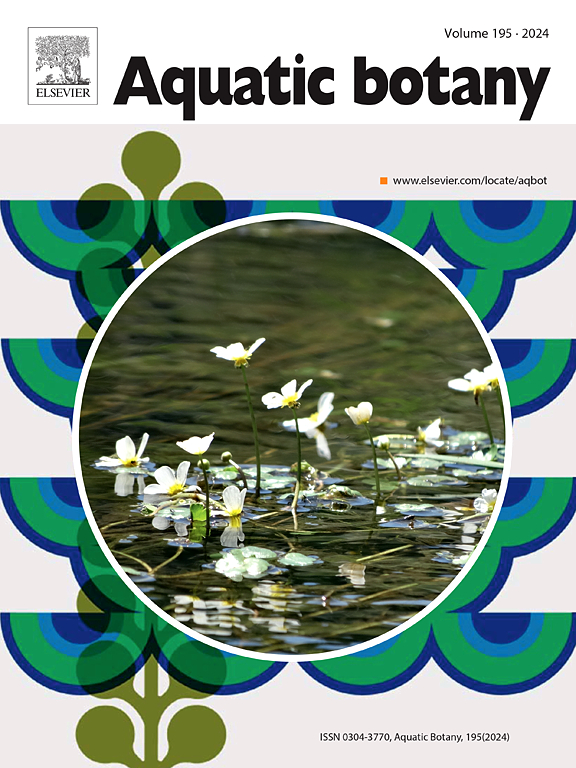Structural and functional dynamics of coralline algal systems under warming scenarios: Insights into vulnerability, and resilience
IF 2.6
4区 生物学
Q2 MARINE & FRESHWATER BIOLOGY
引用次数: 0
Abstract
Globally, climate change affects reef ecosystems, causing community reconfigurations and ecological impacts. Coralline rhodophyta are one of the reef groups most vulnerable to synergistic warmer temperatures, and ocean acidification. Yet, mineralogic, microstructural, and chemical studies of their thalli are necessary to understand their vulnerability and resilience. Here, we studied mineralogy, microstructure, and chemistry of adjacent coralline rhodophyta systems in La Paz Bay: Neogoniolithon trichotomum-dominated tidal pools, and rhodoliths from a shallow rhodolith bed at San Lorenzo channel. These systems depicted mineral diversity, including different phases of high-magnesium calcites in rhodoliths. The carbonates in N. trichotomum included Mg-calcite, aragonite, ankerite, and Fe-carbonates. Compositional X-ray maps of calcium and magnesium in rhodoliths reproduce very well the concentric growth band-structure. In a complementary way, the bands richest in calcium are the poorest in magnesium, and vice versa. They are most likely related to the high-magnesium phases detected by bulk XRD-Rietveld, as indicated by their similar EPMA-WDS Mg:Ca ratios. Chemical imaging at the microscale revealed iron was distributed in the primary mineral structure, in contrast with detritic elements, such as Al and Si, located in the algal surface (perithallus). Because algal elemental content is sensitive to environmental conditions, La Paz Bay coralline rhodophyta systems emerge as interesting models to monitor high-magnesium carbonate, in a scenario of tropicalization.
变暖情景下珊瑚藻系统的结构和功能动态:对脆弱性和恢复力的见解
在全球范围内,气候变化影响珊瑚礁生态系统,导致群落重新配置和生态影响。珊瑚红藻是最容易受到增温和海洋酸化影响的珊瑚礁群之一。然而,对它们的菌体进行矿物学、微观结构和化学研究对于了解它们的脆弱性和恢复力是必要的。在这里,我们研究了拉巴斯湾邻近的珊瑚红石系统的矿物学、微观结构和化学特征:以新戈onithontrichotomium为主的潮汐池,以及来自圣洛伦佐海峡浅层红石床的红石。这些系统描绘了矿物多样性,包括rhodoliths中不同阶段的高镁方解石。赤眼龙的碳酸盐主要有镁方解石、文石、铁白云石和铁碳酸盐。红石中钙和镁的x射线组成图很好地再现了同心圆生长带结构。以一种互补的方式,钙含量最高的条带是镁含量最低的条带,反之亦然。它们很可能与体XRD-Rietveld检测到的高镁相有关,正如它们相似的EPMA-WDS Mg:Ca比值所表明的那样。微尺度化学成像显示,铁元素主要分布在原生矿物结构中,而铝、硅等碎屑元素主要分布在藻表面(藻周)。由于藻类元素含量对环境条件很敏感,在热带化的情况下,拉巴斯湾珊瑚红藻系统成为监测高碳酸镁的有趣模型。
本文章由计算机程序翻译,如有差异,请以英文原文为准。
求助全文
约1分钟内获得全文
求助全文
来源期刊

Aquatic Botany
生物-海洋与淡水生物学
CiteScore
3.80
自引率
5.60%
发文量
70
审稿时长
6 months
期刊介绍:
Aquatic Botany offers a platform for papers relevant to a broad international readership on fundamental and applied aspects of marine and freshwater macroscopic plants in a context of ecology or environmental biology. This includes molecular, biochemical and physiological aspects of macroscopic aquatic plants as well as the classification, structure, function, dynamics and ecological interactions in plant-dominated aquatic communities and ecosystems. It is an outlet for papers dealing with research on the consequences of disturbance and stressors (e.g. environmental fluctuations and climate change, pollution, grazing and pathogens), use and management of aquatic plants (plant production and decomposition, commercial harvest, plant control) and the conservation of aquatic plant communities (breeding, transplantation and restoration). Specialized publications on certain rare taxa or papers on aquatic macroscopic plants from under-represented regions in the world can also find their place, subject to editor evaluation. Studies on fungi or microalgae will remain outside the scope of Aquatic Botany.
 求助内容:
求助内容: 应助结果提醒方式:
应助结果提醒方式:


